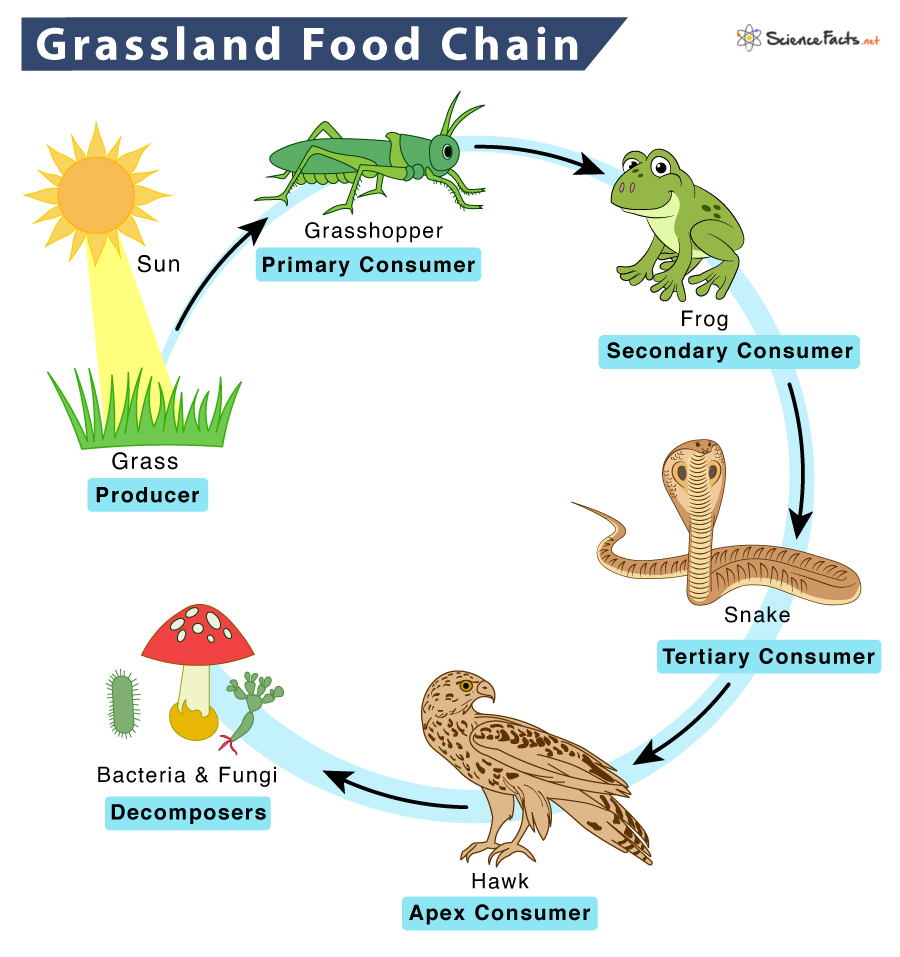In a grassland food chain, the grass is the producer. It produces food using the sun’s energy. The primary consumers follow the producers. Insects like grasshoppers are primary grasslands consumers as they depend on the green plant for their food (herbivores). Occasionally, primary consumers are omnivores as well, such as aardvarks. The frog (carnivores) eats the insects, the secondary consumers in this food chain. In temperate grassland, the prairie dog is also a secondary consumer. Finally, the snake is a tertiary consumer and feeds on the frog. Coyotes are another example of the tertiary consumer in such a food chain. Apex or quaternary consumers like vultures and hawk feed on the tertiary consumers, the snake. Decomposers like bacteria and fungi in the soil act on the dead animals and release the nutrients where primary producers like grass use them to grow and continue the cycle. However, the level of an animal in the chain can change depending on ‘who eats whom’ in the wild. For example, vultures acting as quaternary consumers in this food chain can assume the role of a tertiary consumer in another food chain.
